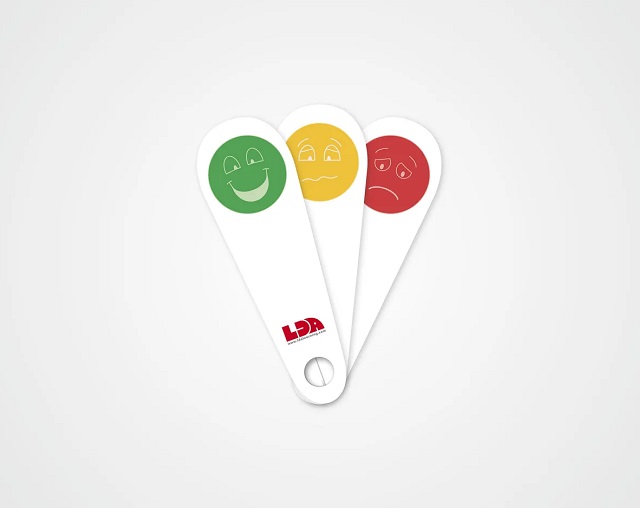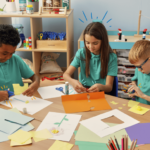
Author: Lindsay Robinson
As a Primary school teacher with over 23 years of experience I have taught many classes with mixed abilities and wanted to share my thoughts on this as well as some helpful advice and resource recommendations. I hope you find the below interesting, relatable and helpful.
Teaching Mixed Ability Classes
Every teacher will face the challenge of meeting a mix of abilities within every class that they teach: of course, everyone is different; we all learn in different ways and have different skills and abilities. Some classes can have a range of need that may seem particularly daunting and a real challenge for even the most experienced teacher; however, a few classroom management techniques and the use of support resources can allow the children to strive (regardless of their abilities, interests, and characteristics) and indeed, the teacher to survive. Here are some strategies for teaching mixed ability classes:
Teach from the top.
It can be much more effective to teach to the top and ask yourself what you need to do to make the planned learning objectives accessible for all your students. This will help to avoid any negative effects of a mixed ability classroom such as a child either getting left behind or becoming bored and under-challenged.
Adapt the task; don’t change it – children of mixed-attainment all tackle the same task.
Provide opportunity for all ability pupils to experience success by adapting lessons, whilst maintaining high expectations for all so that all students are learning. Not so long ago, teachers felt obliged to offer an array of differentiated tasks within one lesson, which not only created a huge workload for the teacher, but also could place a ceiling on learning within the classroom. By allowing ALL students to access the SAME task but simply putting a few adaptations into place, children of all abilities can learn far more effectively whilst reducing the teacher burden. Here are some adaptive teaching strategies that I find useful:
Explicit Instruction
Taking the time to explain a task clearly and succinctly, whilst frequently checking the children’s understanding is key. The use of mini whiteboards for quick pre-task summative assessment is really useful. Modelling the task is so important. I like to ask a high attainer to model under a visualiser to embed understanding before expecting children to tackle something. The visualiser is definitely one of the most important resources in my classroom!
USB Visualiser from Hope Education – 10MP – A3
Cognitive and Metacognitive Strategies
Supporting pupils to retrieve prior learning from the previous lesson or the previous topic is a really useful way to allow children of all abilities to embed learning. In addition, providing children with adapted checklists that match their ability can allow them to monitor their own progress, whilst also feeling a sense of accomplishment at the end of a task. I like to encourage the children to communicate how they are feeling about their own progress and to take ownership of it by using these self-assessment fans. It is easy to see who is feeling confident and who needs extra-support. By matching these children into ability pairs for a quick five-minute review at the end of a lesson, you can tackle any misconceptions straight away.
LDA Self Assessment Fans – Pack of 5 | Hope Education
Scaffolding
Providing scaffolds to support learning can help all children, regardless of their ability, to access the same task. Scaffolds may include word banks with pictures, common exception word cards, written scaffolds with sentence starters, place value charts, place value counters or timetables cards. Providing these to the whole class and allowing pupils to opt in or out, can avoid stigmatisation and encourage independent learning within your classroom.
Use of Technology
From the use of modelling under a visualiser to the use of speech to text software, technology can really help all ability children to access written tasks. I find talking tins can really help lower ability children by reducing their cognitive load. They can tackle the same written task as others but are supported by being able to practise their sentence, listen to it and edit to improve, without having to hold everything in their head all at once. I find talking tins are just as valuable in my Year 6 class as they are lower down school.
Talking Tins 40 Seconds – Pack of 5
Mixed-Ability Groupwork
A range of abilities and a range of skills can equal a wealth of inspiration!
Use the range of abilities in your classroom to your advantage. Setting and streaming can have its place, but it has been proven that it can also have many negative impacts: there is nothing worse than a set of carefully selected children of a similar level, who have no peers to inspire them or indeed anyone to work with to cement their knowledge.
Get to know your students.
Within a mixed-ability classroom, collaborative tasks can allow the children to learn from one another and you will often find that one student’s weaknesses are matched by another students’ strengths and vice-versa. By simply mixing up groupings frequently and assigning roles within groups, a teacher can allow each child to feel empowered or to learn from their peers. Once I know my students well, I like to make them mentors in subjects that they feel more confident in and have had PE mentors, Maths Mentors, Science Mentors for example. Awarding them a coloured badge for the subject they mentor is a great way to boost self-esteem: we all have different talents!
Classmates Star Button Reward Badges – 25mm – Pack of 40 | Hope Education
Switch mixed attainment groupings regularly.
When creating a mixed group of abilities, teachers enable higher-ability students to assist their peers, which reinforces their own understanding, while lower-ability students benefit from explanations from the other students. This dynamic keeps students engaged and motivated and gives a sense of achievement as well as promoting social skills. Switching groupings regularly is essential as a higher ability child explaining learning to others can be very effective and can lead to mastery, but teachers must be careful not to depend too often on using high attaining students as explainers, as this can be frustrating for high attainers and patronising to children at other attainment levels – switching groupings and assigning roles within groups regularly can help to avoid this. I like small groups of four and try to have children of different attainment levels in each group: high, middle-high, middle-low, and low.
Careful classroom management and the effective use of resources are powerful tools in managing mixed ability classes, boosting engagement, deepening understanding, and helping every child to progress. By integrating these techniques, you will see the benefits of mixed ability groupings in primary schools.
Lindsay Robinson has been a primary school teacher for 23 years and has seen many changes in schools throughout that time. Lindsay has taught children from Reception to Year 6, but has spent most of her time with Year 6 pupils alongside her many roles including P.E Lead, Able, Gifted and Talented Lead, Computing Lead and ECT Mentor. Educated to degree level in English Literature and Language as well as a PGCE qualification Lindsay has helped to write and develop the English curriculum in her current school, with a particular focus on children’s writing. Her favourite subjects to teach are English, Maths and Computing. An avid reader she always enjoys sharing her passion for books with children and encouraging them to develop reading as a life-long habit.
Lindsay is passionate about achieving the very best outcomes for children through quality first teaching and experiences and always strives to make her classroom a nurturing and caring environment. As an author for Hope Education, Lindsay enjoys drawing upon her own experiences in the classroom, to support and encourage other teachers in their own classrooms.
All of the resources recommended can be found at hope-education.co.uk. Hope is rated Excellent on Trustpilot and offers Free Next Day Delivery. Hope has won many awards for the best service in the industry making Hope their customers’ Undisputed First Choice Education Resource Supplier. Part of the Findel family and home to EuHu – the Educator Hub created by teachers for teachers, Hope understands educators’ challenges and exists to make each day that little bit easier. For everything you could need each day, with value, service and quality you really want, Hope is all you need. *Full Terms and Conditions and latest prices and promotions are available online too. Primary School & Early Years Teaching Resources | Hope Education (hope-education.co.uk).





